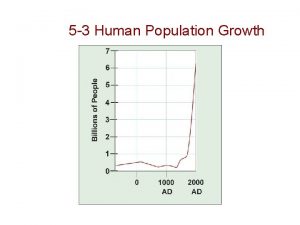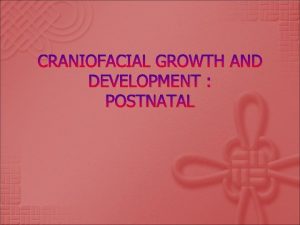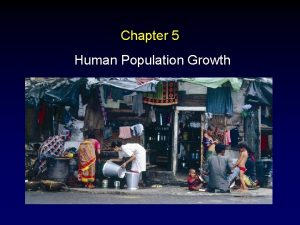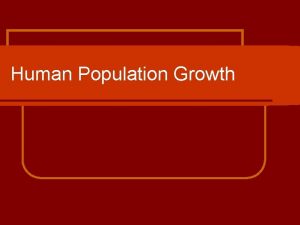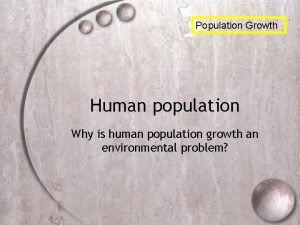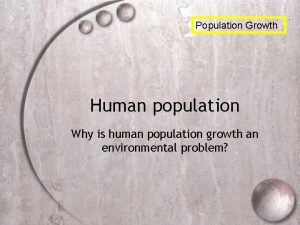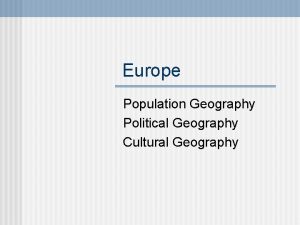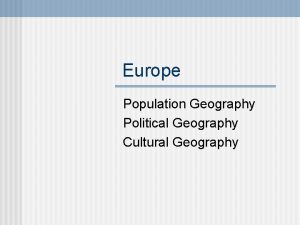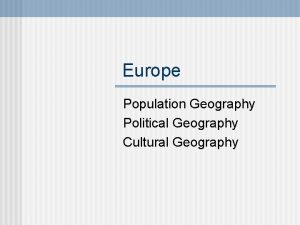Theories of Population Growth AP Human Geography Population












- Slides: 12

Theories of Population Growth AP Human Geography

Population Distribution Where on each Continent are population centers?

Thomas Malthus � Was first to note that the world’s population was increasing faster than the food supply needed to sustain it. � Believed population growth could be stopped by birth control or abstinence; though highly unlikely. � Instead, believed population growth would be checked by famine, accompanied by disease and wars fought on earth.

Malthus Basic Theory

Ernst Ravenstein � Wrote 11 migration laws, based on his study of internal migration including: � Distance decay: the decline of an activity with increasing distance from its point of origin. � Step migration: long term migration done in stages EX: rural to town, town to city � Intervening opportunity: many who set out to move a long distance find opportunities to settle before their original destination

Demographic Transition Theory � States that variations in fertility and mortality rates, and natural increase rates vary considerably � These variations follow and overall global pattern. � All countries go through 4 stages

DTT Stage 1 � Low Growth ◦ Preindustrial, agrarian societies ◦ High birth rates to work farms, little access to birth control ◦ Death rates are high due to low standards of living ◦ Characterized population until mid-18 th century

DTT Stage 2 � High Growth ◦ Industrialization bouth about demgraphic transition. ◦ Greater food supplies and medicine; birth rates stayed high, natural increase explodes. ◦ Mortality revolution – Death rates dropped significantly in Europe. ◦ Many of the world’s poorest countries are in this stage today.

DTT Stage 3 � Moderate Growth ◦ Mature industrial economy ◦ Birth rate drops, curbs population ◦ In Europe, rapid urbanization created more jobs in cities ◦ Fertility rates fall because more children survive to adulthood ◦ Children become economic liabilites rather than assets.

DTT Stage 4 � Low Growth ◦ Post-industrial economy completes demographic transition ◦ Birth rate keeps falling; women are working outside the home ◦ Higher education levels encourage women to delay marriage and children. ◦ Steady death rates, population grows slowly or decreases.

Demographic Transition Theory � Has occurred in UK and much of Europe � Many demographers predict most countries will stop growing at some time in 21 st century and reach stationary population level (SLP)

Demographic Transition Theory
 Exclave ap human geography definition
Exclave ap human geography definition Whats a density dependent factor
Whats a density dependent factor Slow growth age structure diagram
Slow growth age structure diagram Physiological density ap human geography
Physiological density ap human geography Slow growth cities ap human geography definition
Slow growth cities ap human geography definition Slow growth cities definition ap human geography
Slow growth cities definition ap human geography Baby boom definition ap human geography
Baby boom definition ap human geography Frq examples ap human geography
Frq examples ap human geography 5 themes of geography ap human geography
5 themes of geography ap human geography Ap human geography political geography test
Ap human geography political geography test Gni definition ap human geography
Gni definition ap human geography Different theories of growth and development
Different theories of growth and development Theories of craniofacial growth
Theories of craniofacial growth


